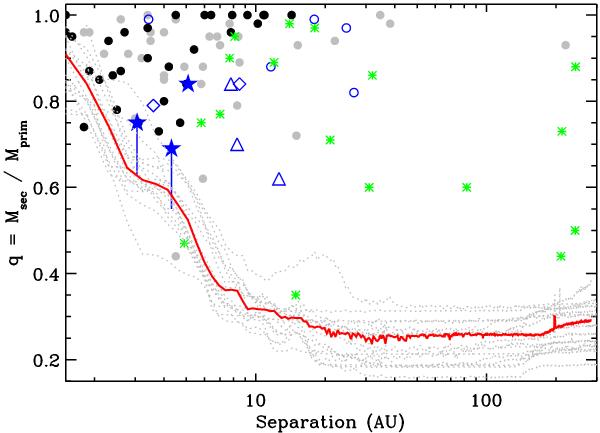Fig. 5

Detection limits (5σ) for companions to Hyades very low-mass stars expressed as a minimum detectable mass ratio derived from the 600 Myr K-band BT-Settl isochrone. Dotted gray curves represent individual detection limits while the red curve shows our median detection limit. Blue stars represent companions to Hyades brown dwarfs with mass ratios estimated from their K band photometry; the associated vertical segments indicate the range of mass ratios derived from the various available near-infrared fluxes. Only companions believed to be bound to our targets are shown here. Blue diamonds represent Hyades very low-mass binaries from Siegler et al. (2003), for which we recomputed component masses using the same method as systems from our survey. Open blue triangles represent Pleiades brown dwarf binaries from Martín et al. (2003) while green asterisks represent binary very low-mass objects in nearby star forming regions (age ≲5 Myr, see Sect. 4.2). Blue circles indicate the low-mass binaries observed in this study. Gray and black circles represent field very low-mass stellar and substellar binaries from the Very Low-Mass Binary archive, respectively. Notice how brown dwarf binaries in open clusters and star-forming regions tend to have lower mass ratios relative to their field counterparts.
Current usage metrics show cumulative count of Article Views (full-text article views including HTML views, PDF and ePub downloads, according to the available data) and Abstracts Views on Vision4Press platform.
Data correspond to usage on the plateform after 2015. The current usage metrics is available 48-96 hours after online publication and is updated daily on week days.
Initial download of the metrics may take a while.


